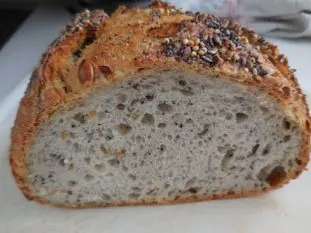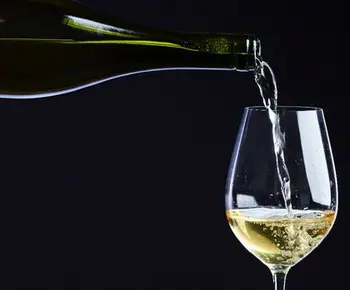This site uses only a few technical cookies necessary for its operation. By continuing to browse, you accept their use.
To find out more...
To find out more...
Foie gras service

For the upcoming christmas meals you too may be sacrificing to the tradition of foie gras?
If so, I suggest you take a look at everything that revolves around serving foie gras: how to serve it, and what to eat and drink with it.
If so, I suggest you take a look at everything that revolves around serving foie gras: how to serve it, and what to eat and drink with it.
16 K 4.9/5 (14 reviews)
Last modified on: December 23th 2017
Foie gras service
1) Temperature
This is an important point, the foie gras needs to be fresh but not too hard either because it just came out of the fridge. The ideal combination for this is to take it out of the fridge 10 minutes before serving, but not more, because then it softens too much, especially in rooms that are a bit warm (in temperature).2) Accompaniment
For the choice of what you will drink and eat with it, there are basically 2 schools: either you are rather "tone on tone", and so you accompany the softness and sweetness of the foie gras, or you are rather "contrast" and in this case on the contrary, you will look for a break, with something drier and sharper.Let's break it down a bit:
Toasts
If you are "tone on tone", you will go for a soft and tender bread, like a pain de mie, or even more so a brioche, or even a thin slice of pain d'épices. If you're in that shade, with you'll probably also enjoy either a bit of chutney, or a fruit jam that's a bit tart, or some dried fruit like apricots.If you're "contrast", it's the opposite direction: a rustic, typey, crusty bread, ideally a sourdough bread, or a country bread (or both), maybe even a rye bread or a seed bread (top!). With this bread, the taste of the foie gras is enhanced, made even softer by the difference in texture. No accompaniment with it (jam or other), at most a turn of the pepper mill or a pinch of fleur de sel, on the liver, just before tasting, for those who like it.

Wine
The "tone on tone" will go towards a sweet wine, or even a syrupy one, always in the accompaniment. Sauternes is a great classic for sweet wines, as is sweet Jurançon. But for a more subtle nuance, I invite you to try a Loire wine such as Coteaux du Layon, it is in the tone on tone, but more nuanced.The "contrasts" will lean towards the opposite, dry and fruity, staying on the side of Angers, a Savennières is an excellent choice, but also a more classic wine like a Chablis or a Reuilly.
A daring trick to try if you can, while going for a dry white wine, try a Vin du Jura en cépage Savagnin, be careful it's special, but with its nutty aromas, what a result!
Still in contrast, you should not limit yourself to white, a well tannic red wine is also a very interesting option.

What to choose?
So there is no right or wrong way to enjoy foie gras, there are just 2 ways, and again, they can be mixed according to your taste, the important thing is that you like it, and that it is the taste of the foie gras that dominates.For a family meal with several guests, and therefore different tastes, you can ensure a complete success by serving two different wines, and several kinds of bread, to please both trends.
For example, I'm very much a contrarian and can't appreciate the sweet and sour side, so I serve the foie gars with toasted sourdough and cereal bread. And with that, a glass of coteaux du Jura, or a coteaux du Layon "Croix-blanche" (the one Sylvie Termeau makes at the Moulin de Chauvigné in Rochefort-sur-loire, France is just perfect) depending on the taste of the guests.
To sum up: Foie gras out of the fridge 10 minutes before, and served with toast and a wine "tone on tone", or on the contrary "contrasted" according to your taste.
Lasts posts
Butter vs. grease
We often read in a recipe where a pastry is put into a mould that, just before pouring, the mould should be buttered or greased. But what's the difference between these 2 terms?December 1st 20251,2525
Getting out of the fridge early
Very often when you're cooking, you need to take food or preparations out of the fridge, to use them in the recipe in progress. There's nothing tricky about this: you just take them out of the fridge and use them, usually immediately, in the recipe. But is this really a good method?November 24th 20251,2265
Who's making the croissants?
When you look at a bakery from the outside, you naturally think that in the bakery, the bakers make the bread, and in the laboratory, the pastry chefs make the cakes. It's very often like that, with each of these professions having quite different ways of working, but sometimes there's also one...November 23th 20251,111
Oven height
When we put a dish or cake in the oven, we naturally tend to put it on the middle shelf, and that's what we usually do. But in some cases, this position and height can be a little tricky, so let's find out why.October 8th 20253,0515
The importance of sieving
In recipes that use a fine powder (flour, powdered sugar, etc.), you'll often see the advice to sift before using it. To sift is to pass the powder in question through a sieve (a very fine strainer) before incorporating it into your recipe. It's often advice, but is it really useful?September 3rd 20257,7393
Other pages you may also like
The return of the "Norman hole"
You maybe know the "trou normand", this old gastronomic custom typically French which consists in taking a (small) glass of calvados, generally between the last course and the dessert? It's something that seems a bit anachronistic nowadays, having a glass of an alcohol of more than 60° in the...December 18th 202115 K4.8
Soup vs. potage
It's true that we're finally coming out of winter as I write these lines, and that we'll all be making, no doubt, a little less soup and potages, but even if it's out of season, it really is a simple and delicious dish, which is one of the always easy answers to "What's for dinner this (Sunday)...April 9th 202211 K
What is the difference between bakery and patisserie?
This is a question that you may well have asked yourself and which I will attempt to answer. In France the two trades of "boulangerie" (bakery) and "pâtisserie" (patisserie and confectionery) have always been quite distinct, but where exactly do the boundaries lie? .February 7th 2017134 K 14.1
Candied fruits: don't get ripped off
Do you like candied fruit? You might like to nibble a handful or add it to a recipe, like a classic fruit cake or delicious Italian specialities like panettone or sicilian epiphany pie.June 21th 201767 K 24.2
Egg yolks and caster sugar
We often come across recipes where we need to mix egg yolks with caster sugar. This would appear to be a very ordinary and simple thing to do but, be warned, these two ingredients can behave oddly together.February 15th 201883 K 24.3
Post a comment or question
Follow this page
If you are interested in this page, you can "follow" it, by entering your email address here. You will then receive a notification immediately each time the page is modified or a new comment is added. Please note that you will need to confirm this following.
Note: We'll never share your e-mail address with anyone else.
Alternatively: you can subscribe to the mailing list of cooling-ez.com , you will receive a e-mail for each new recipe published on the site.









